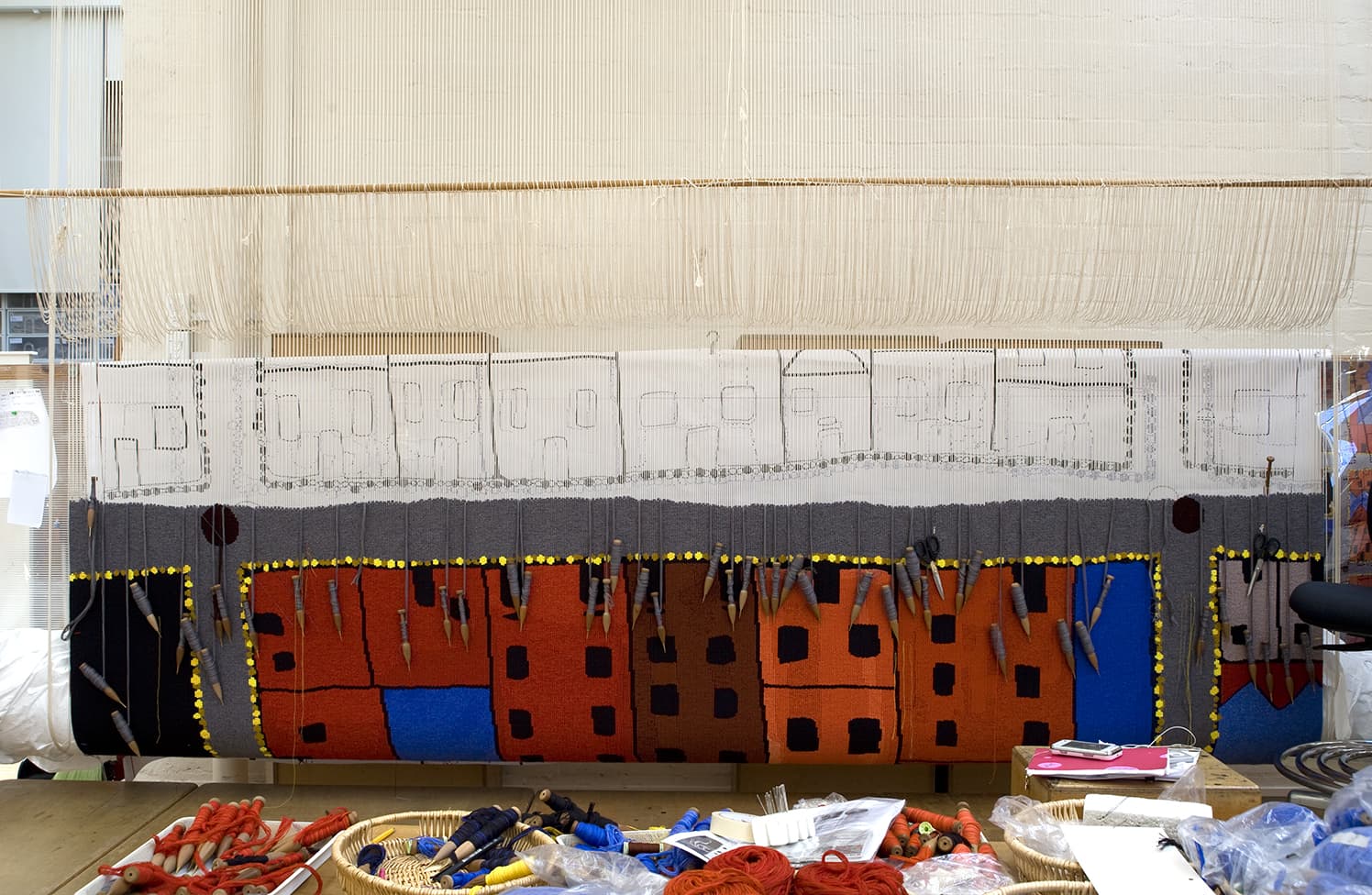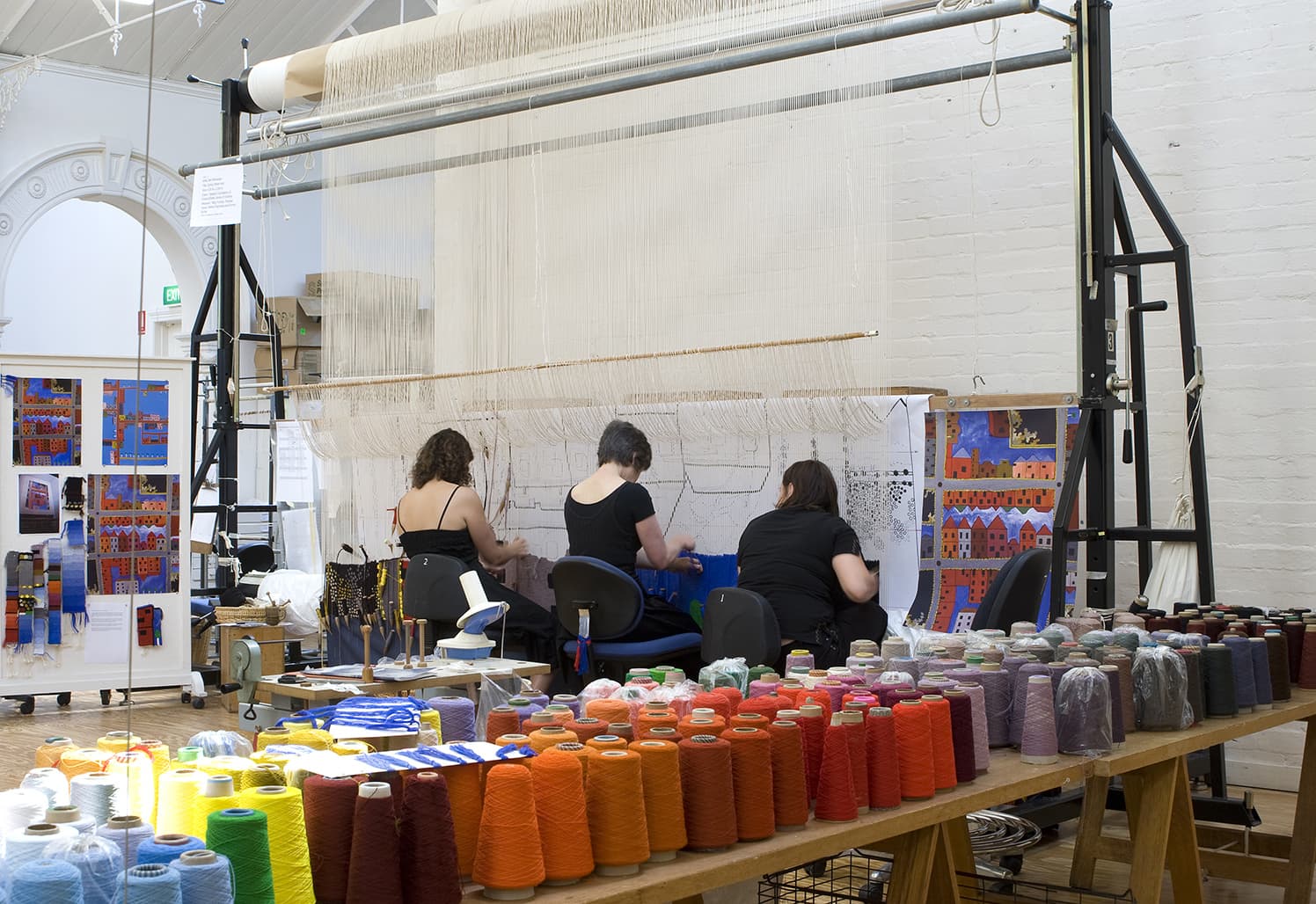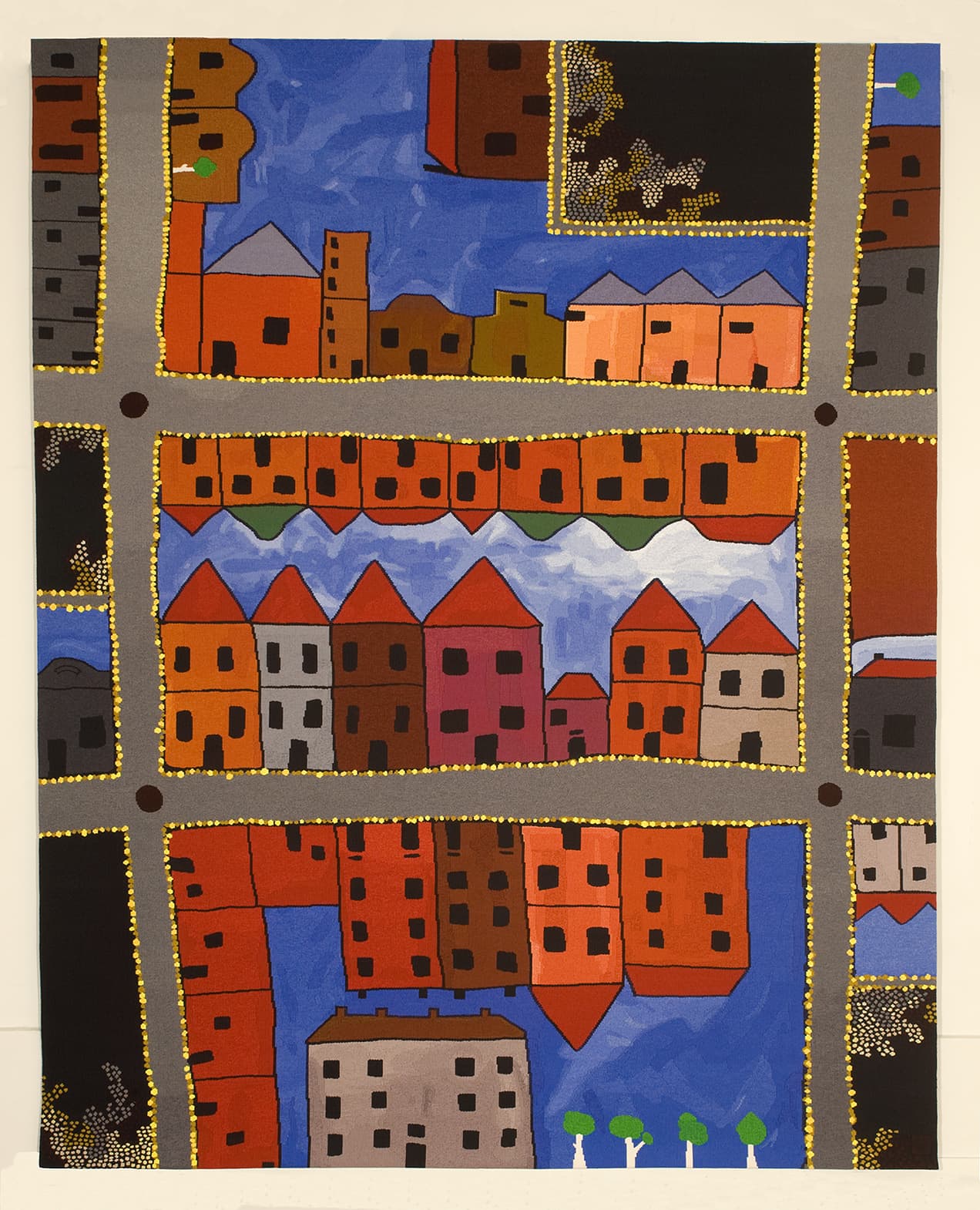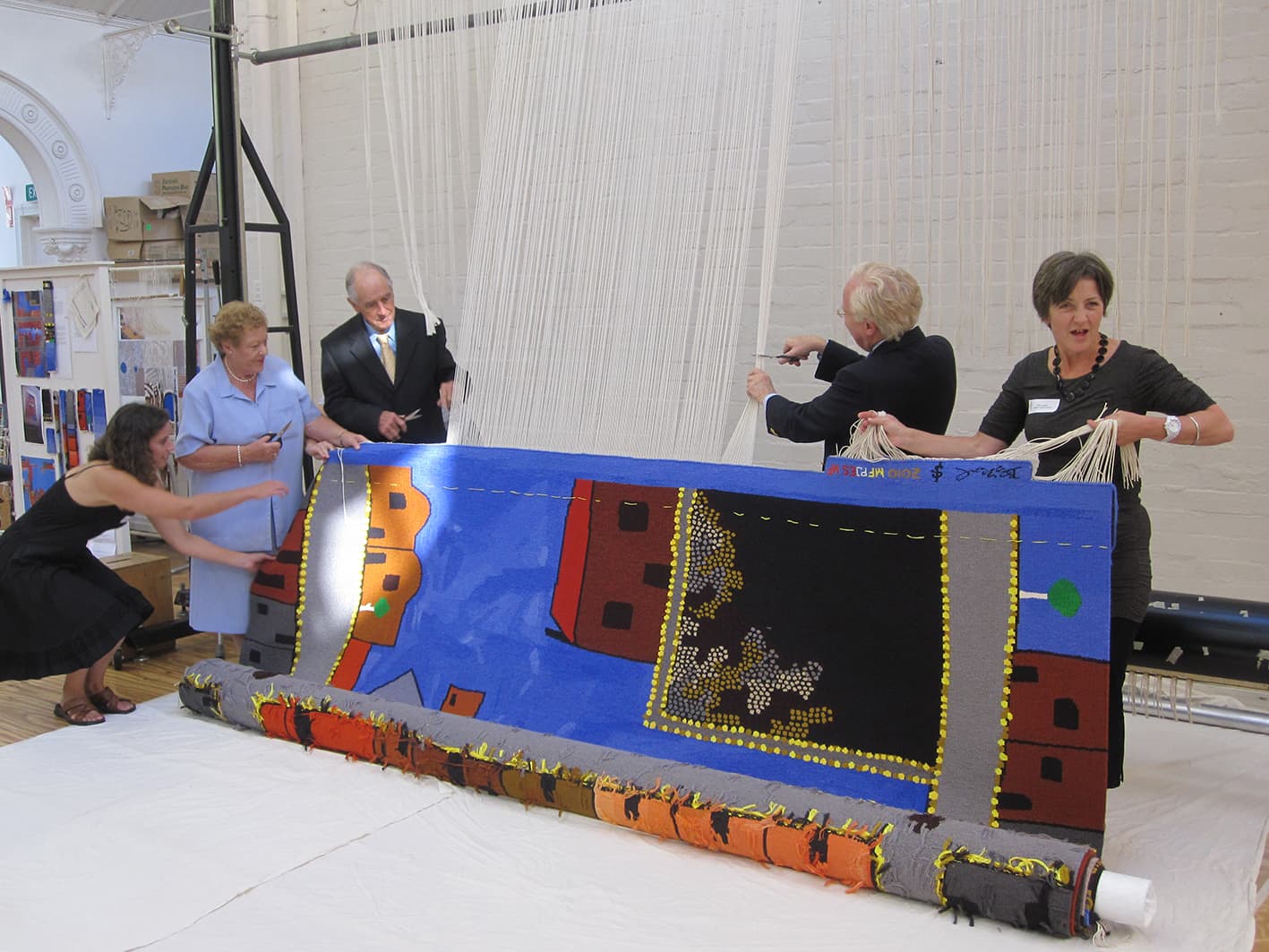




Ben McKeown, descendant of the Wirangu language group of the Far West Coast of South Australia, designed Spring Street end in 2011 to reference the hidden Aboriginal history of Melbourne.
Commissioned for the State Library of Victoria (SLV) by the Tapestry Foundation of Australia, with funding from the Marjorie J Kingston Charitable Trust, Spring Street end extends upon McKeown’s interest in the practicalities of urban space, dwellings, identity and culture.
The areas of black and dots in the corners of the design represent plants within the area of Spring St in Melbourne’s CBD. Using plants as a metaphor for the stories and physical / historical markers of the Indigenous history of this area, the artist comments on the attempted destruction of an Aboriginal presence within Melbourne, as a result of colonization, and the persistence of an Indigenous voice despite of this destruction.
Through their interpretation, the weavers have broken down the broad areas of colour within the design into shapes. Each area is treated as a separate segment, using contrasting tones to describe the detail. The weavers have kept the tones in the bobbin mixes similar, using an approximate 2/3 tone-shift, to keep the shapes created from the design clear and vibrant.
At the beginning of the interpretation process the weavers had the opportunity to take their samples into the SLV to discuss the design with McKeown. Through this experience the weavers discovered that the pitch of the blue they had used for the samples was too grey and not vibrant enough for the space. The weavers worked with ATW dyer Tony Stefanovski to develop a blue that sits slightly outside our standard range and has a more purple-blue base tone. During the sampling the weavers also noticed that the black, which dominates the borders of the shapes, was very cold. They experimented with mixing the black with other colours and have included a variety of additional tones in each bobbin, depending on what the black border is surrounding. For the red houses, a few brown threads have been included. For the borders that divide the sky and houses, blue threads have been included. This colour-mixing softens the harshness of the areas of black within the design.
The original artwork that the weavers referred to for this project was a digital print of a painting. Relying on a reproduced image can be potentially fraught, as each printer will produce slight variations in colour. Some accidental colour details, resulting from the printing process, have been incorporated into the tapestry schema, through discussion with the artist, to create a truly original interpretation of the design.
Ben McKeown is represented by Gallery Gabrielle Pizzi in Melbourne.